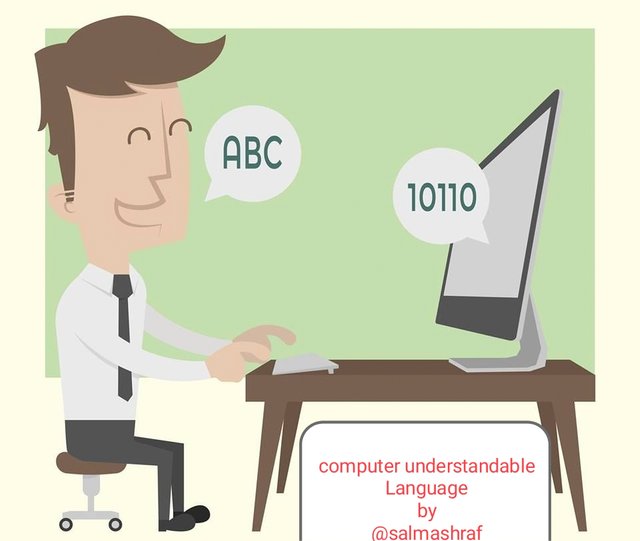Siz Education || Computer Understandable Language || 10% payout to siz-official
I hope you you are happy and enjoy your winter 🥶 very much. Today I want to share you about computer understandable Language.The computer is a highly sophisticated machine made up of layers and layers of technology. Because A computers do not understand anything, they are a large network of simple digital circuits that obey the laws of physics. The modern chip Of computer 💻🖥️ can have billions of transistors.

Building on that you have layers and layers. Some layers are very complex but offer only limited interaction. For example, the Intel chip has a complete Minix system that works inside it just to provide a machine language base and multiple CPUs.
That is to say, in general, the lowest level one can use to deliver orders to computers is machine language. This is a set of instructions in numerical order (digit sequence). These commands include a set of CPU instructions, and that command sets limits on what the computer can do.
What is a Machine Language?
The language a computer can understand and use is called machine language.Machine language is the only one anguage that a computer can understand. ... The Computer programs are written in one or more high level programming languages, such as C ++, Java, or Visual Basic. The computer cannot directly understand the programming languages used to build computer programs, so program code must be compiled.
Low-level programming language is programming language that provides little or no abstraction in the creation of a set of computer commands — commands or tasks on a language map next to processing instructions. Usually, this refers to the machine code or assembly language.
Editors often use languages such as English (so-called advanced languages) such as Basic, C, Java, etc., to write programs that are translated into machine language (so-called standard language) by the compiler, producer, or translator.
The language of the machine would be represented, by humans, as numbers. In the 50s or 60s, before Assembly Language and Assemblers became more widespread, program planners might have to enter numbers, manually, on the panel.
Therefore, the simplest language a computer and a person can understand and “speak” numbers represent instructions that govern the conduct of an electronic circuit (such as adding register B to register A). We call it the machine language.
I must point out that there are computers with a set of flexible instructions, or computers that can be microprogrammed, that is, there is a language “under” a set of commands that one can use to adjust what a computer can do, to its limits. rotation.
However, people are much better off verbally. From the beginning, we have linked these commands with the mnemonics they represent, such as ADD A, B to add register B to register A. These mnemonics form the Assembly Language.

Source
In the meantime, more chips will be introduced and discussed using their Conference Language as the most readable representation of real machine language (numbers). Normally, we use Assemblers (a kind of computer program) to translate Assembler to Machine Language, but in the end, working on a new chip, it is possible for someone to do some translation by hand.
It is not easy to plan major programs in the Assembly, so we have developed Language Planning. Planning Languages are designed to be easy to use and clear on computers. Usually, they are designed for a single purpose, such as, initially, Fortran is built to count, Cobol for commercial applications, and C for system configuration.
Planning Languages can be translated directly, by editors, into Machine Language or other intermediate representations, such as Assembly or Other Planning Languages. Many students create programming languages that translate something into C, and combine C.
There are attempts to make computers understand graphics (such as UML diagrams) and native language (such as English).
Computers do not understand any languages. Just as your light does not understand that it must be turned on or off when you flicker the switch. By flashing the switch, you can allow or prevent electrical energy from flowing into the bulb (whatever) causing it to glow or not. Similarly, computers follow the instructions you (or someone) code in sequence. These commands work very similarly as a light switch in reality — causing different circuits in the CPU to bring about a change of position. And the next command triggers other regions, leading to another region. The sequence of these machine features leads to the desired result — but you need to specify exactly what the machine will do in each location.
That’s called planning — just using a set of ancient actions that the CPU can perform to produce complex behaviors. The computer has no sense of understanding what it does or should do; the definition (or semantics) of the operating system is only available in the operator's head, not on the computer. Like a lamp without knowing what it is to “see”; it simply begins to shed light when electrical energy passes through the music — as that is how you were designed, not because you will understand that you would like to read a book.

Thank you for sharing this valuable post with our community members.
Keep sharing your posting with us.
Steemexclusive : Yes
Bit Bot : No
Club5050 : Yes
Plagiarism : No